ROMANCING THE STONE (1984)
A mousy romance novelist sets off for Colombia to ransom her kidnapped sister, and soon finds herself in the middle of a dangerous adventure hunting for treasure with a mercenary rogue.
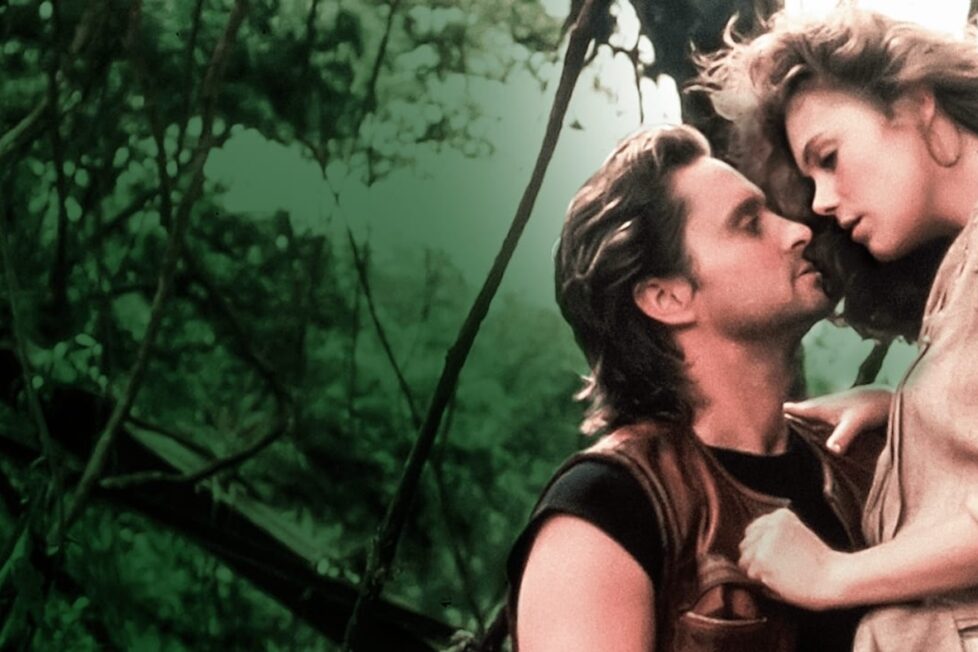
A mousy romance novelist sets off for Colombia to ransom her kidnapped sister, and soon finds herself in the middle of a dangerous adventure hunting for treasure with a mercenary rogue.


In 1984, Robert Zemeckis’s name was mud in Hollywood. That’s right. The famed director of classics like Back to the Future (1985) and Who Framed Roger Rabbit (1988) was one box office flop away from obscurity. Zemeckis and his future hits were saved by two unlikely heroes: an unknown female screenwriter, Diane Thomas, and actor Michael Douglas (then mostly known for being the son of Hollywood star Kirk Douglas).
The film they presented to Zemeckis as a possible directing project seemed equally unlikely to be a box office success. It was an action-adventure film that called for a female lead and contained more than a hint of the dated swashbuckling tropes that were thought to have long since run their course. The studio executives who ran 20th Century Fox were so underwhelmed by an initial screening of Zemeckis’s film that they promptly sacked him from a future project he was due to head up.
Despite all these obstacles, Romancing the Stone remains a much-imitated, timeless classic 40 years after its release. The reason for this? A beautifully written story with electric chemistry between the cast, and tight pacing that keeps the audience engaged until the very last second.
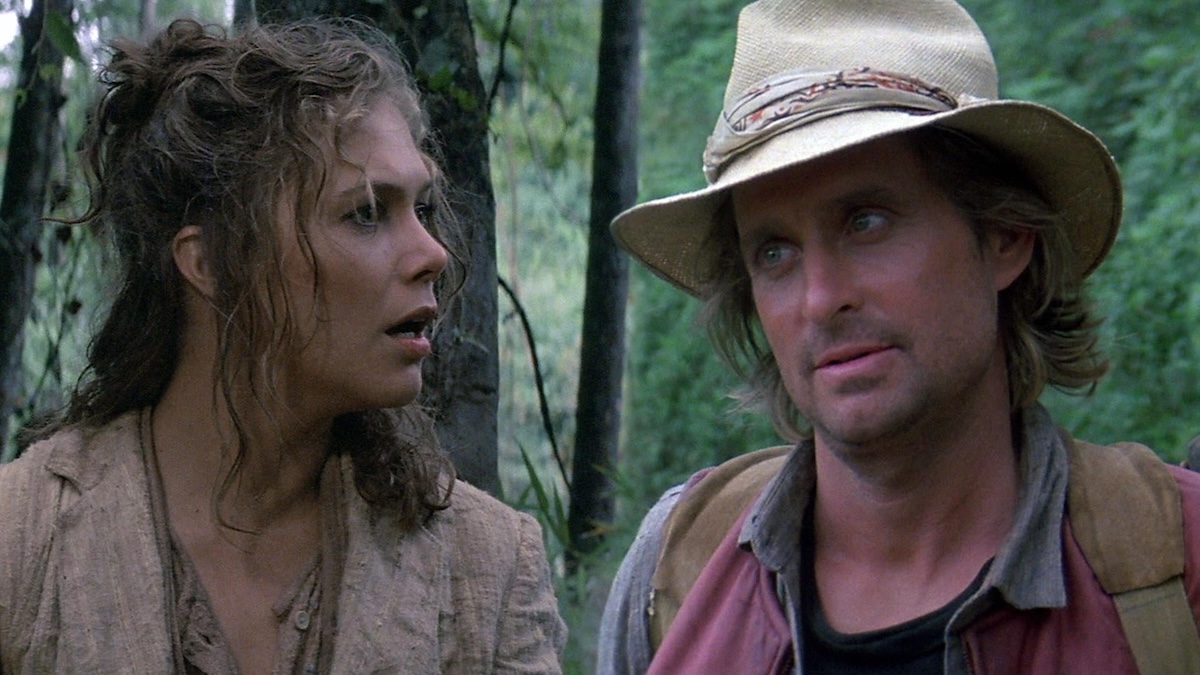
The film, set in New York and Colombia, centres on the successful but lonely romance novelist, Joan Wilder (Kathleen Turner). When Joan receives a mysterious map in the post from her recently deceased brother-in-law, she’s informed that her sister Elaine (Mary Ellen Trainor) has been kidnapped in Colombia by treasure-hunting cousins, Ira (Zack Norman) and Ralph (Danny DeVito), who demand that she bring the map to them in exchange for her sister’s safe return.
What follows is an adventure straight out of Joan’s novels. It comes complete with a handsome adventurer in an exotic bird smuggler named Jack T. Colton (Michael Douglas), a moustache-twirling villain named Zolo (Manuel Ojeda) on a treasure hunt for a priceless jewel, and the unlikely assistance of a group of romance-loving drug smugglers.
The first element that truly makes this adventure story stand out from the rest is the sheer fearlessness of the writing. Michael Douglas noticed this and cited the spontaneity and brave spirit of the writing as his reason for buying the script from Thomas in Diane Thomas’s obituary when she died in a tragic car crash just a year and a half after this film hit cinemas. Watching the story unfold on screen four decades after its theatrical release, it’s easy to see what Douglas saw.
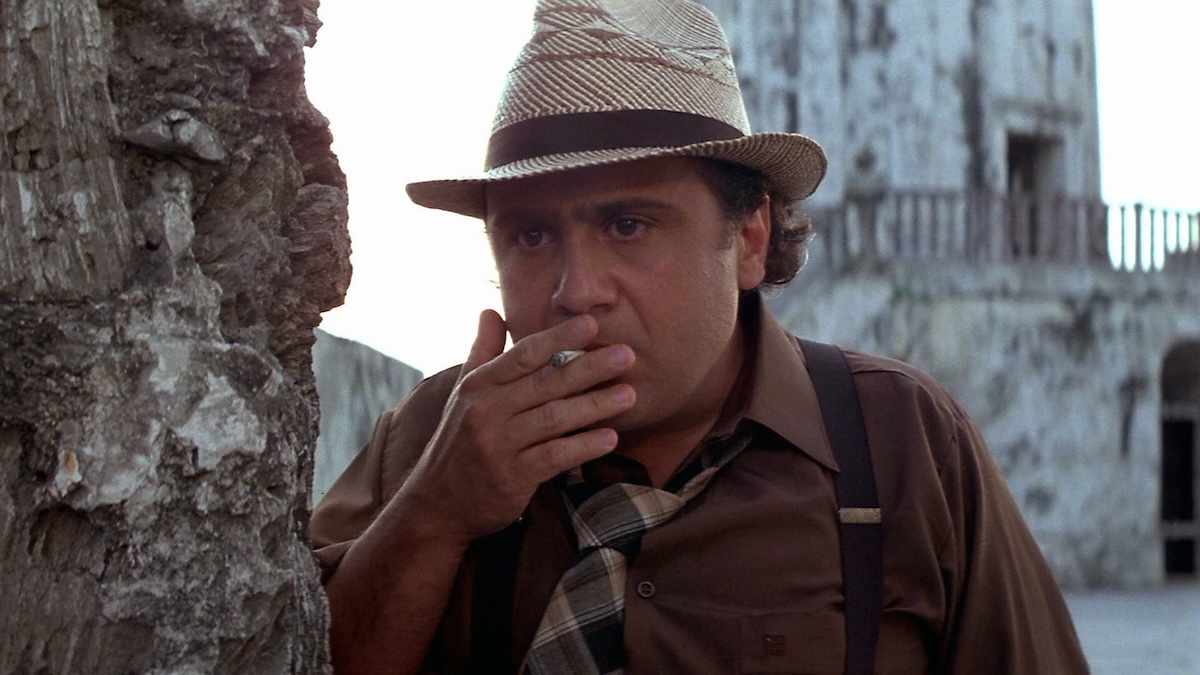
The story in the film feels less like a Hollywood cash grab and more like someone’s daydream brought to life on screen. It combines the fantasy of a paperback romance with the visceral suspense and shoot-outs of the ’80s action genre. Unlike many action films of the period, Romancing the Stone offers a likeable female lead with believable obstacles and a satisfying character arc. This well-written and well-acted arc is evident in one of my favourite on-screen parallel scenes.
In one of the film’s first scenes, we see Joan crying as she writes the ending to her latest novel. Her tears are for the happy ending her heroine receives, one she believes is out of reach for herself. She feels she isn’t destined for a life of adventure and romance, and can only experience them through the characters and plots she creates.
Towards the end of the film, once the dust has settled from her daring treasure hunt, we again hear sobs while someone is reading. Now, it’s Joan’s agent, Gloria (Holland Taylor), crying over the ending of Joan’s work. Gloria is crying because, this time, Joan’s novel, based on her real-life adventure, has touched something within the universal human spirit. Joan has learned to give her audience the truth, not just a fantasy. The writing in these two scenes sums up the importance of experiencing life, not just dreaming about it. That this truth is struck so beautifully speaks of a screenwriter who knows what she wants to say and is not afraid to say it.
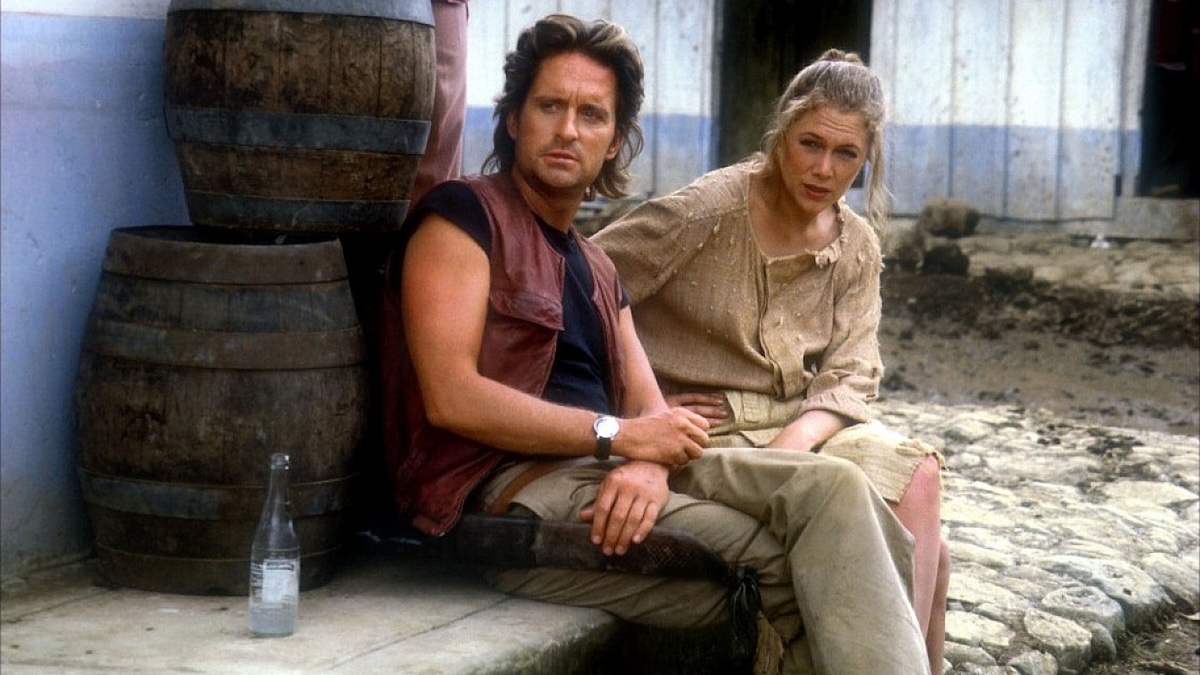
Another reason for Romancing the Stone’s continuing appeal lies in the chemistry between its leads. While the passion between Douglas and Turner may or may not have continued off-set, one thing’s for sure, it’s electric on screen. From the moment they meet, tension crackles and, like in all good romances, it culminates in a fiery dance scene. The chemistry is reinforced by two talented actors who are focused on the development of their characters as much as they are on their relationship’s chemistry.
While Jack Colton might be dismissed as another snarky adventurer in the Indiana Jones mould, Douglas imbues him with a very different energy. There’s a joyfulness to Jack that’s absent in other action heroes of the era. His genuine, almost childlike love of travel, adventure, and adrenaline is infectious, lending him a more good-natured disposition than your typical rogue.
This is perhaps because Douglas was known primarily as a TV actor in 1984. His less muscular physique was thought not to be believable in an action role. Initially, although Douglas produced the film, the studio wanted to cast a different star. They suggested everyone from Sylvester Stallone to Christopher Reeve, but in the end, it was clear that Douglas was the man for the role. And, like Bruce Willis in Die Hard (1988), Douglas proved that personality, rather than muscle, makes for a true action hero.
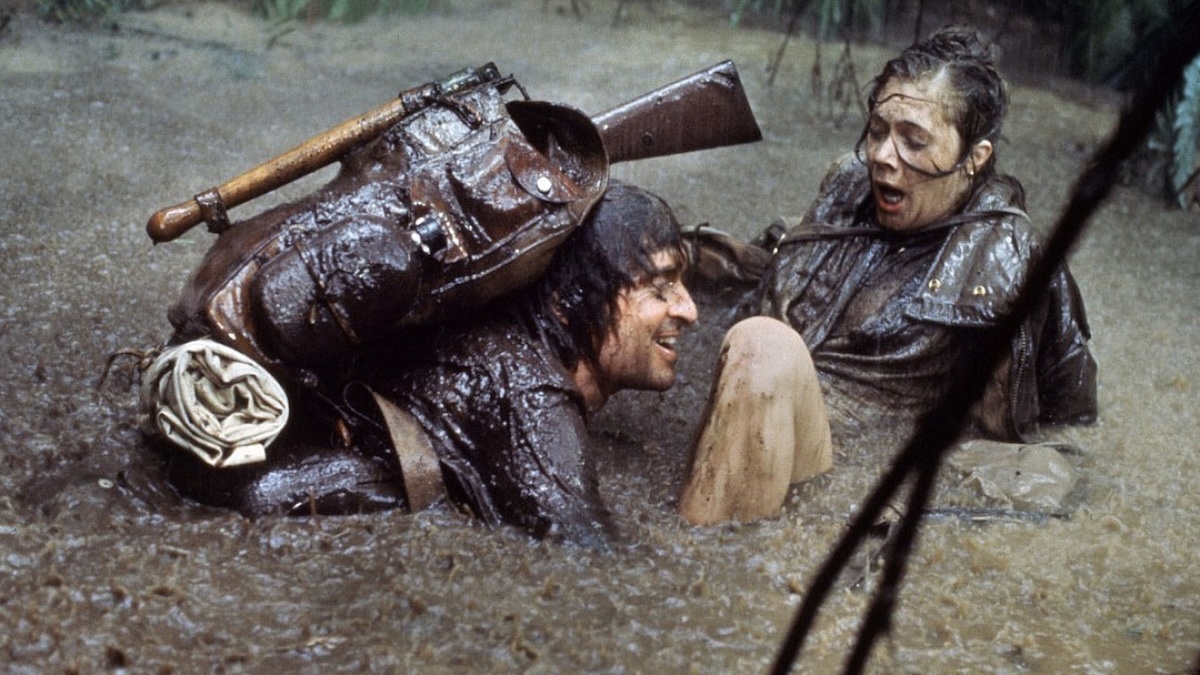
Turner, likewise, wasn’t the studio’s first choice for the film’s leading lady. Initially, they were interested in Debra Winger for the role, but for reasons that remain disputed, they passed Winger over in favour of Turner, a relative newcomer—fresh off her scene-stealing debut in Body Heat (1981). It was that part that convinced casting directors she would be right for this role. And they were correct on that front.
Unlike many glamorous leading ladies, Turner is entirely believable as a dowdyish, introverted writer who’s out of her element outside the hustle and bustle of New York City. She plays Joan Wilder with a strength that’s different from the warrior princesses we see in action films like Aliens (1986) or Conan the Barbarian (1982), but it’s clear she does have strength. In this action heroine, brains and strength of character are more essential than being comfortable being in a fistfight or a shoot-out. In short, she’s an action heroine who is comfortable being a woman.
Turner is also very comfortable with her femininity and her strength was on full display behind the scenes when she got into sparring matches with Zemeckis over his direction—particularly when he instructed her to tilt her body in a certain way or when he made her reshoot a scene facing another camera.
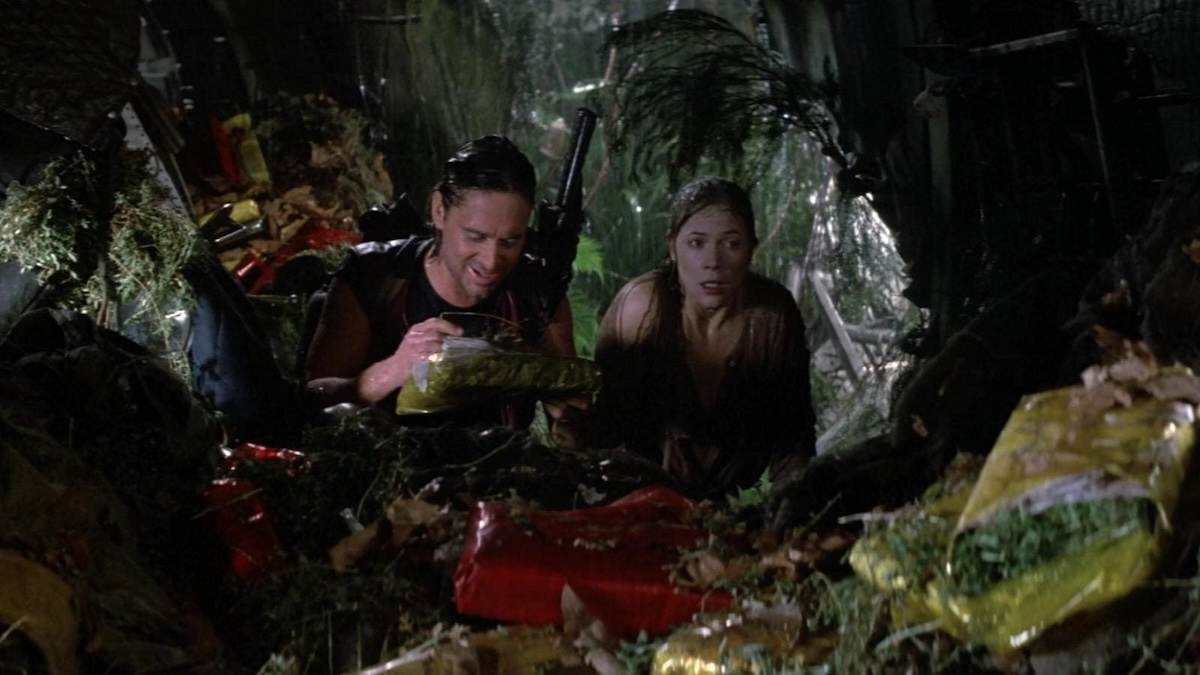
The cameras that Turner grew to loathe so much allowed Zemeckis to capture every inch of the adventure for the audience. His dedication to achieving the perfect shot every time resulted in not only beautiful cinematography but a story that puts the audience right in the heart of the action. From the outset, it’s clear that we, the audience, are destined to be the third member of Jack and Joan’s adventure. And the active camerawork ensures that we’re never left behind.
This film, which directly led to Zemeckis’s long career in Hollywood, deserves a place alongside his most well-known classic Back to the Future. Other movies, including The Lost City (2022) and Tropic Thunder (2008), have borrowed storylines and beats from this classic film and owe it a debt of gratitude.
Romancing the Stone proved that cinemagoers weren’t weary of swashbuckling fantasy adventures. And, honestly, I hope we never will be.
USA • MEXICO | 1984 | 106 MINUTES | 2.39:1 | COLOUR | ENGLISH

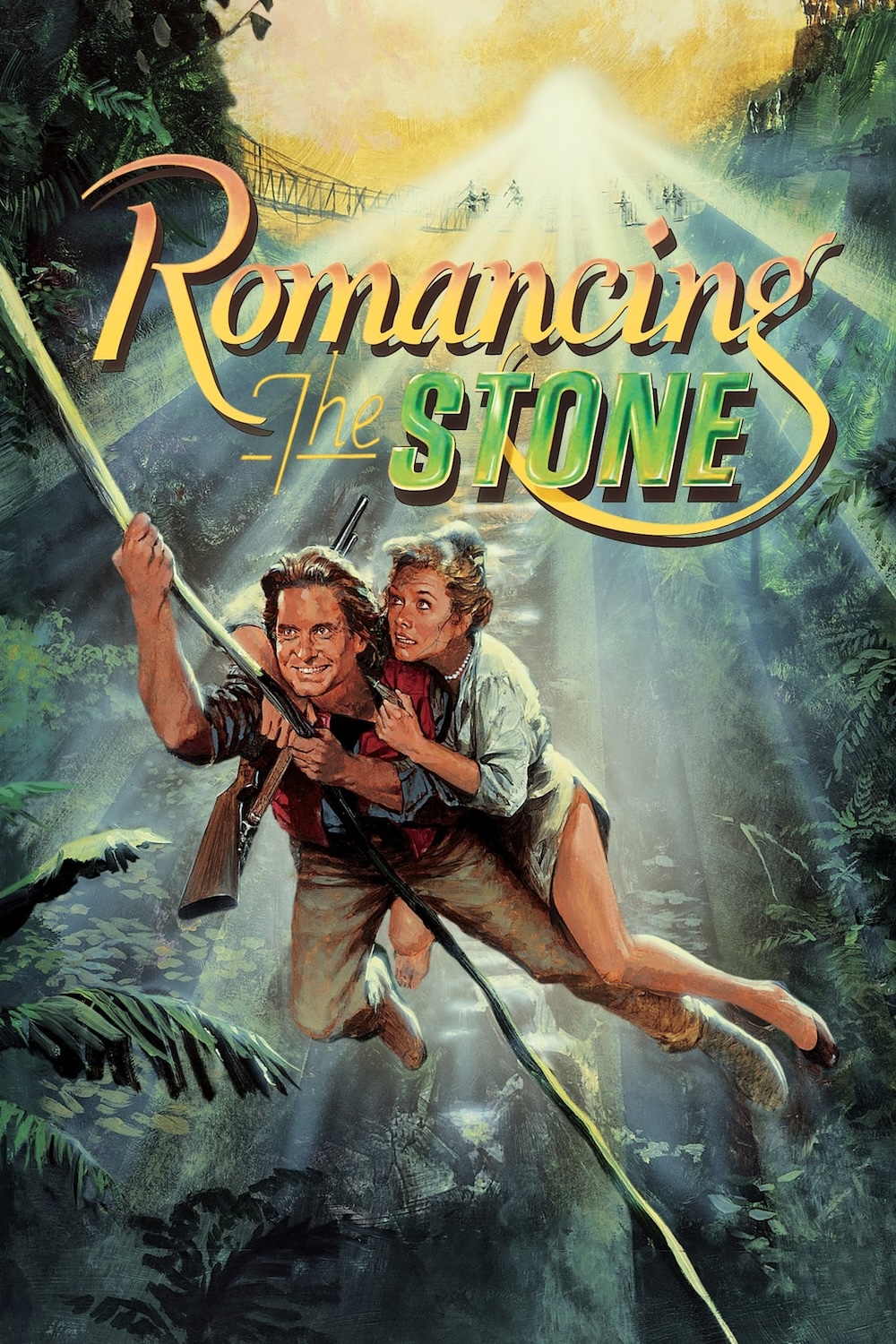
director: Robert Zemeckis.
writer: Diane Thomas.
starring: Michael Douglas, Kathleen Turner, Danny DeVito, Alfonso Arau, Manuel Ojeda, Holland Taylor & Mary Ellen Trainor.
